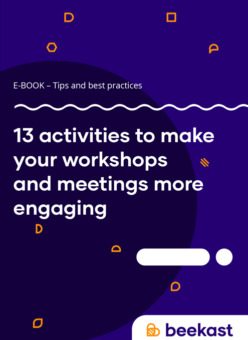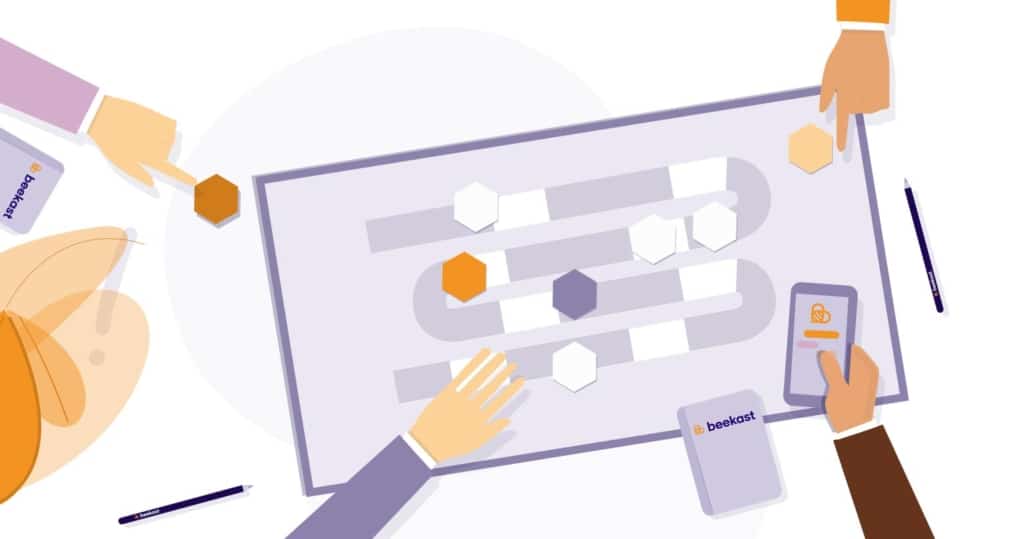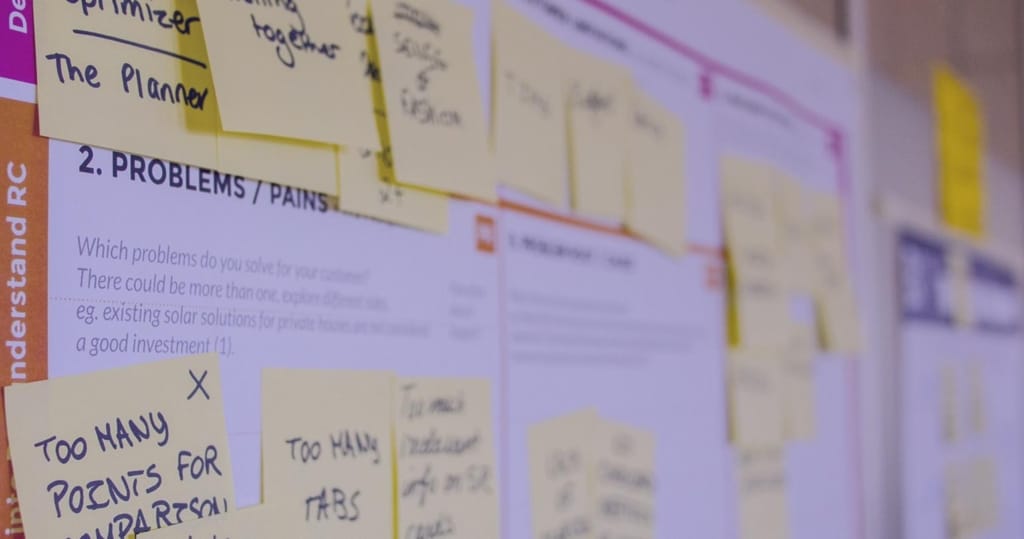Do you need to generate original ideas to solve a problem or lay the foundations for a project? We’ve got just the thing: the ideation workshop. You’ve probably already heard of its more well-known form: brainstorming. But there are many more techniques to boost a group’s creativity.
What is an ideation workshop?
To put it simply, ideation is a method using a number of facilitation techniques to help a team to come up with a significant number of new ideas. The aim is to enable each team member to get out of their usual way of thinking and enter a divergent phase so as to encourage innovative solutions.
This notion is closely linked to design thinking, which is itself made up of five stages:
- Empathise, to understand the need,
- Define the problem, to put it into words,
- Ideate, to encourage co-construction, collective thinking and intelligence,
- Prototype, to examine the solutions,
- Test, to confirm their relevance.
With design thinking, the ideation stage gets ideas flowing to leave you with a wide range of possibilities!
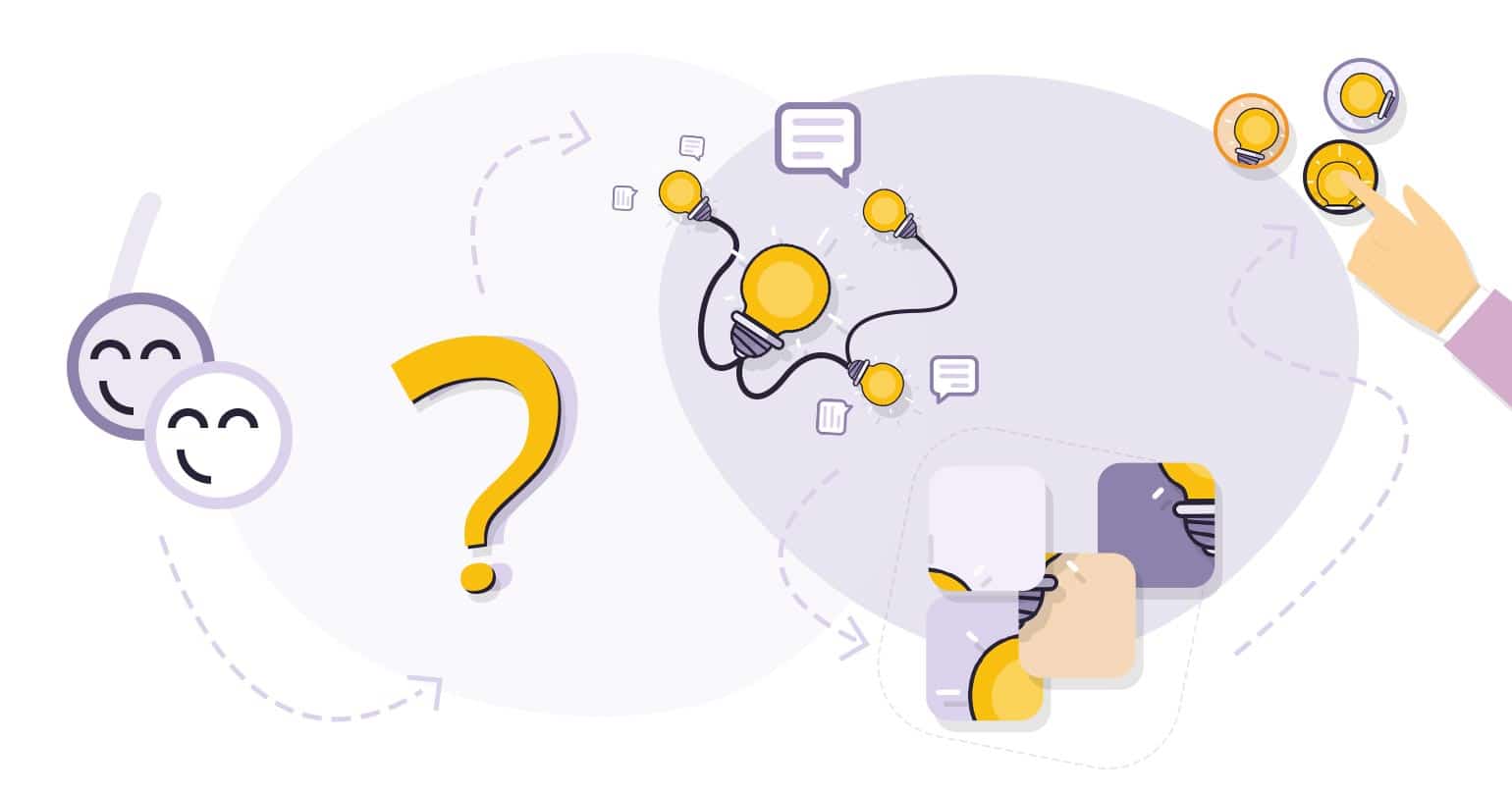
Creating an atmosphere that encourages ideation
To put participants at ease, you can start with a traditional ice breaker. Then you can present the conditions to ensure the workshop is a success. Just like brainstorming sessions, ideation workshops have four key rules:
- Never judge the other participants’ ideas,
- Share all of your ideas, without censoring yourself,
- Go for quantity over quality for a maximum of ideas,
- Bounce off the other participants’ ideas.
You could display these rules so that everyone keeps them in mind throughout the exercise. They are an essential starting point as the group will likely be made up of employees from different teams and with varying profiles.
Choosing the right ideation technique
There are many different ideation techniques – it’s up to the leader to choose the one that’s best suited to their workshop. Here are some of the most common examples.
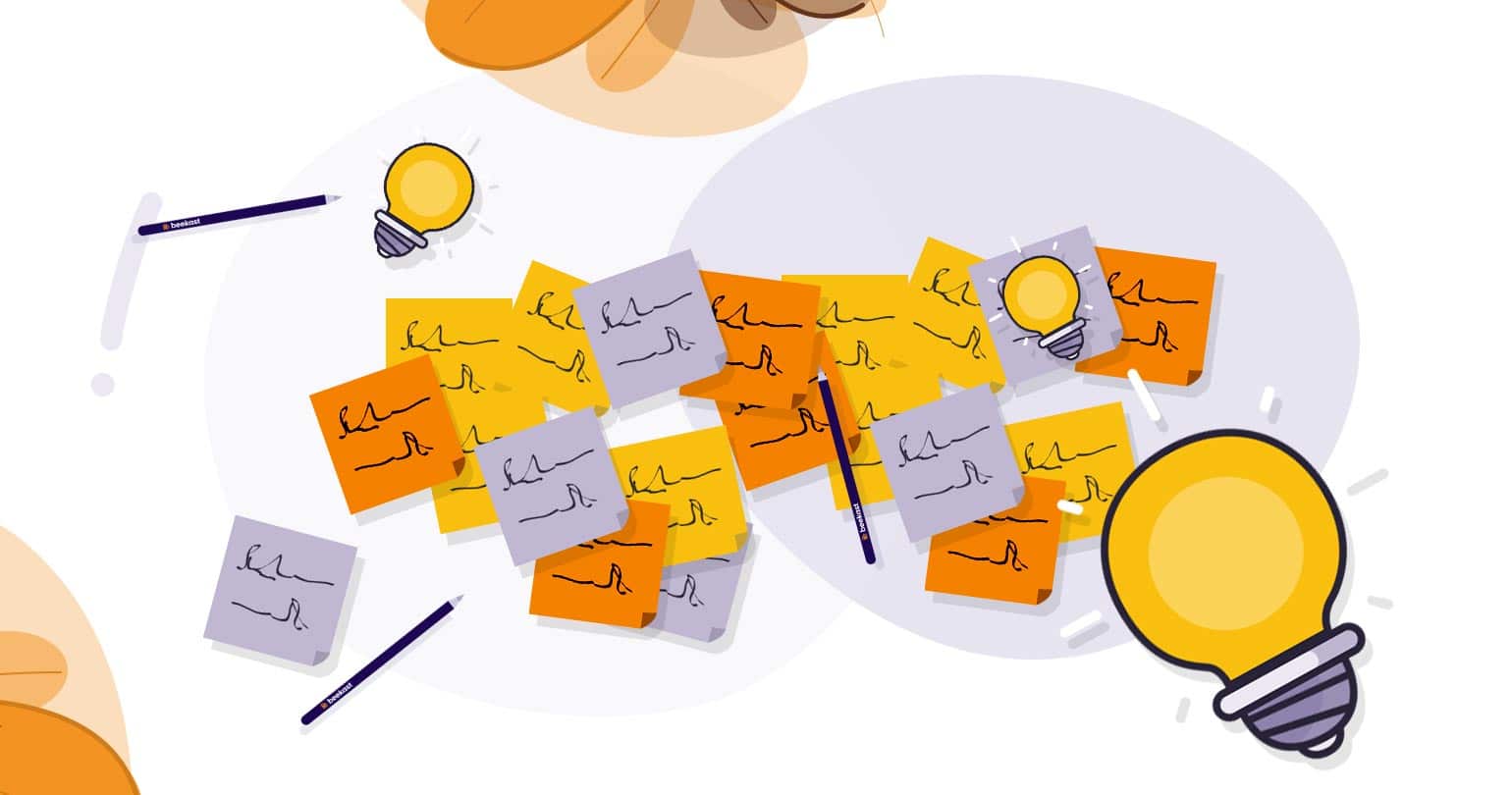
6-3-5 brainwriting: the power of writing
“Brainwriting” is a very popular technique which focuses on writing instead of speech. The most common type of brainwriting – 6-3-5 – sees 6 people each writing 3 ideas on a sticky note, within 5 minutes. Each person then gives their notes to their neighbour, who has to repeat the exercise, based on the original ideas. This technique can generate 108 ideas in just 30 minutes!
SCAMPER method: reworking an idea
The SCAMPER method is used to improve a product, service or process. The acronym SCAMPER stands for the verbs: substitute, combine, adapt, modify, put to another use, eliminate and reverse. A whole host of ways to fine-tune and perfect your original idea.
Crazy 8s: sketching out solutions
In this exercise, each employee has a piece of paper with eight boxes. The goal is to draw a different solution to the problem in each of the boxes. The solution can take any format: visualising a service, a product, or more abstract designs – participants are free to choose! Each creation is then presented to the group, and two or three ideas are chosen to be further developed.
What if: the height of creativity
If circumstances allow, you can also use the “What if” method by asking the question “what if…?”. What if we had an unlimited budget? What if Homer Simpson or Elon Musk, for example, had to solve the problem? As well as being good fun, this technique is very flexible and can be tailored to your objectives.
_________________
We hope that this article has given you a better understanding of the principle of ideation and the benefits these techniques can have for your company. To set up a co-creation workshop, we recommend choosing an experienced leader or using high-performance tools.
And since there are many other techniques out there, why not visit our inspiration website to learn about reverse brainstorming, the innovation matrix, thinking hats and many more. Choose your favourite and get started!
By working with Beekast, you can take advantage of numerous templates that are already included in the solution
Create a free account now to take a look

